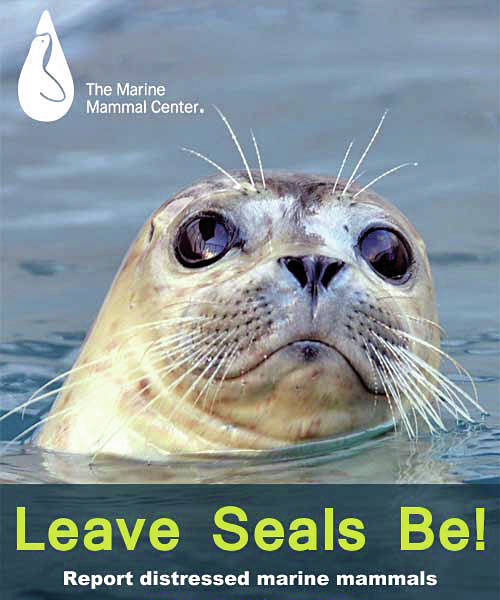By ANGELO BRUSCAS
And SCOTT D. JOHNSTON
Do not touch or get too close to the seal pups that often are left temporarily by their mothers along local beaches.
That simple message is on signs at all the main beach approaches in Ocean Shores, but often gets ignored by tourists who see the small marine mammals as a chance for a selfie or — even worse — attempt to touch or pick up the pups.
Federal marine mammal regulations prohibit harassing seals on shore “to reduce human disturbance of important life processes.”
Local resident Dennis Schulte drives the beaches frequently and saw a seal pup last Saturday afternoon on the beach just north of the Pacific Blvd. approach. “I was down there watching and I saw people near it, tried to run ’em off, but people kept coming. They would walk up and pet it, take selfies,” he said.
Dyanna Lambourn, a Marine Mammal Research Biologist with the Washington Department of Fish and Wildlife, said the pup’s mother was observed returning to her offspring around 2 a.m., after Schulte and others monitored the site into the night until the pup returned on the incoming tide.
“The big reason why it’s important to stay back” from seal pups, Lambourn explained, is that, often, “moms will not come back if there is a disturbance. Whether that’s humans, dogs, or eagles, if a seal mom perceives there is danger, she’s not going to come back.”
Eagles and other wildlife are part of the natural environment. “The big thing we can manage,” she said, “is human disturbance and interaction.”
Ocean City State Parks Ranger James Schmidt said seal pups are born in this area of the coast from about mid-April through June.
“They are not commonly seen, but we can usually count on 6-8 occasions each spring we respond to a report of a pup on the beach,” Schmidt said. “During this time of the year, we usually place information about seal pups on our bulletin boards located in the North Beach area.”
Information regarding seal pups can be found on the Washington State Fish & Wildlife Department’s website at http://wdfw.wa.gov/
NOAA recommends staying at least 100 yards away from seal pups and says “a minimum undisturbed observation period of 24 to 48 hours is recommended to determine whether the pup is being attended by a female.”
Steve Green, lead docent at the Coastal Interpretive Center at Damon Point, said the center receives a lot of inquiries about seal pups. He understands why many people, especially visitors, may interact with seal pups on the beach.
“These little harbor seals are cuter than a kitten, they wiggle toward you, look at you with big eyes and make little crying noises and there’s no mother to be seen,” he said. Most locals have learned to leave them alone, but “people from elsewhere have never had any experience with a marine mammal in their life. The first thing they think is these adorable little guys need help.”
He would like to see improved warning signs at all the beach approaches, and suggests solar-powered flashing lights to draw attention.
Green noted that “one of the largest rookeries of seals and sea lions north of San Francisco is right here at Bill’s Spit,” on the bay side of the Ocean Shores peninsula. “You can see hundreds if not thousands resting out there. They go around the corner at Damon Point and scatter down the coastline.”
Response Training
“Quite a few people are interested in helping to get signs out and try to protect these guys,” Lambourn said. To that end, she and others will speak at a seminar on Outer Coast Marine Mammal Stranding Response Training, Tuesday April 24, from 10 a.m. to 1 p.m. at the WDFW Region 6 Office, 48 Devonshire Road, in Montesano.
Also speaking will be Deanna Lynch, from the US Fish & Wildlife Service and Jessie Huggins, the “stranding coordinator” with the Cascadia Research Collective, based in Olympia. She coordinates and conducts Cascadia’s responses to stranded marine mammals throughout the state. Those wishing to attend may register at wdfw.wa.gov/about/volunteer/events/
Training will include:
• Stranded Marine Mammal Guidelines and Protocols
• Basic Marine Mammal Species Identification
• Who do you call?
• NW Marine Mammal Stranding Network Call List
• How and what you can do to help
• How to Volunteer
Reporting incidents
NOAA operates a Fisheries Enforcement Hotline (800-853-1964) for reporting incidents of people or pets tormenting, disturbing or attempting to remove a seal from the beach.
The agency has contact information for local stranding network coordinators at: www.westcoast.fisheries.noaa.gov/protected_species/marine_mammals/stranding_maps_and_contacts.html.


